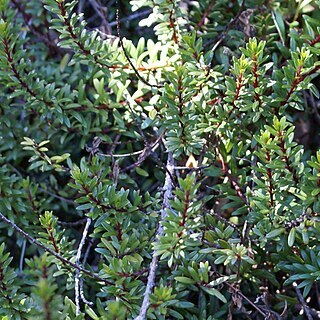Scandent shrubs or small trees, dioecious, glabrous or pubescent. Leaves petiolate, rarely subsessile, alternate, entire or toothed. Inflorescence a terminal panicle, axillary raceme or cluster. Flowers pedicellate or sessile, 4-5-merous. Sepals united to 1/3 or almost free, imbricate or rarely contorted. Petals free or minutely coherent at base, mostly imbricate, rarely contorted, usually hairy on inner surface. Stamens longer than the petals and adnate to them at varying heights or rarely free; filaments long, slender, rarely short or absent; anthers splitting longitudinally. Ovary of ♂ flowers much reduced, conical, tongue-like or stipiform, that of ♀ flowers subglobose or ovoid, usually hairy, very rarely lepidote; ovules few in one row on the placenta; style rather thick; stigma disc-like, entire or rarely lobed. Fruit globose, rarely obovoid, 1-seeded. Seed subglobose, covered by membranous remains of the placenta, sometimes much intruded at base; endosperm smooth or strongly ruminate; embryo cylindric, transverse.
Shrubs, becoming lianous at maturity, or lianas. Leaves alternate, distichous, or pseudoverticillate. Inflorescences racemose, paniculate, umbellate or corymbose, bracteate at base. Pedicel subtended by one persistent floral bract. Flowers 4-or 5-merous, bisexual or functionally unisexual and plants dioecious, polygamous, or monoecious. Sepals united at base. Petals free or united at base, glandular granulose inside and often along margin. Stamens adnate to base of petals, rarely free, normally exserted in staminate flowers, reduced in pistillate ones; filaments free; anthers dehiscing longitudinally, connectives usually punctate abaxially. Pistillode reduced and style included in staminate flowers; ovary globose or ovoid; ovules ca. 4, uniseriate. Style exserted; stigma discoid or capitate, sometimes slightly lobed. Fruit drupes, prominently punctate, 1-seeded; endocarp crusty or rarely bony. Seeds subglobose, covered by membranous remnants of placenta; endosperm ruminate; embryo terete, transverse.
Stamens longer or shorter than corolla and inserted at varying levels, rarely almost free; filaments usually well developed; anthers dehiscing by slits or very rarely by pores (not in F.Z. area), usually with a dark spot on the abaxial side.
Ovary of female flower subglobose or ovoid, often pilose, with a long or short style; stigma disciform, entire or rarely lobed; placenta with few ovules arranged in 1 row.
Flowers unisexual (and species dioecious), 4–5–merous, borne in axillary racemes or umbels or in terminal or lateral panicles (not in F.Z. area).
Petals free or shortly connate, elliptic, obovate or oblong, the inner surface and sometimes the outer margins densely papillose.
Seed subglobose, with a small to large basal cavity; endosperm ruminate (in F.Z. species) or smooth.
Sepals almost free or shortly connate, imbricate, usually marked with resiniferous dots.
Shrubs, very often scandent, rarely arborescent.
Fruit a ± globose 1–seeded drupe.
Leaves entire or crenate.

